THE CONVERSATION
Boeing needs to get real: the 737 Max should probably be scrapped
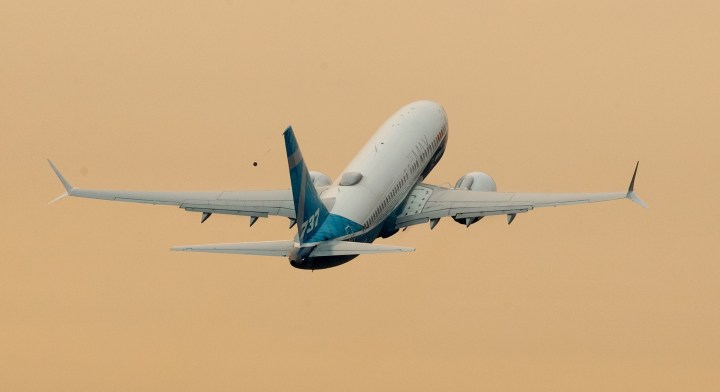
There have been so many problems with the 737 Max that the nuclear option may be the best way forward.
The Boeing 737 Max was recently in the news again, this time because the door plug on a brand-new plane came off soon after take-off. The pilots of the Alaska Airlines flight from Portland, Oregon, managed to return the Max 9 safely to Portland International Airport, but the consequences would have been far more serious had the incident occurred at cruising height a few minutes later.
Alaska Airlines and fellow US carrier United Airlines have also discovered loose hardware and connections on their fleets of 737 Max planes. The US Federal Aviation Administration (FAA) has now grounded 171 Boeing aircraft, mostly operated by Alaska Airlines and United Airlines, pending inspections.
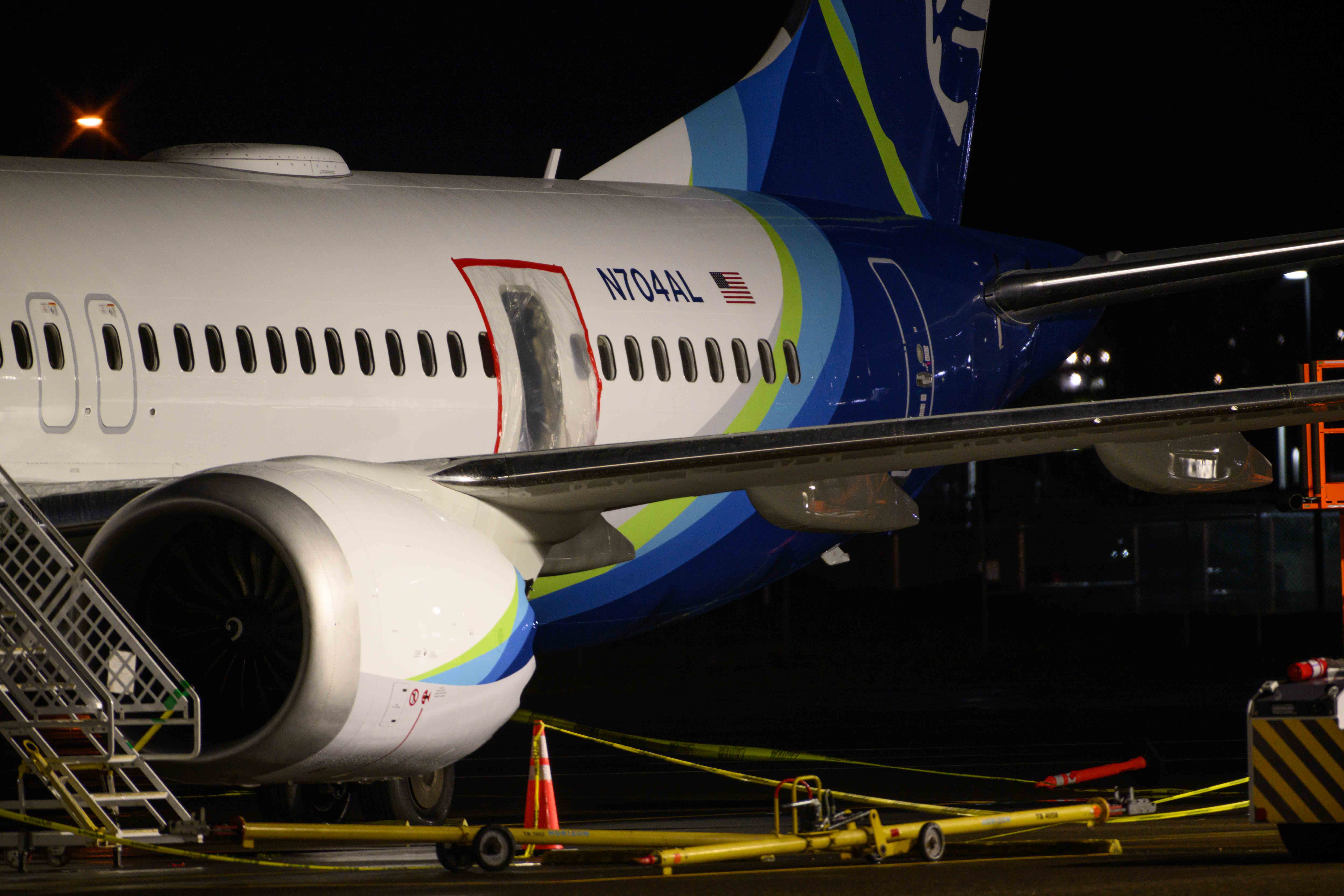
A plastic sheet covers an area of the fuselage of the Alaska Airlines N704AL Boeing 737 MAX 9 aircraft outside a hangar at Portland International Airport on January 8, 2024 in Portland, Oregon. NTSB investigators are continuing their inspection on the Alaska Airlines N704AL Boeing 737 MAX 9 aircraft following a midair fuselage blowout on Friday, January 5. None of the 171 passengers and six crew members were seriously injured. (Photo by Mathieu Lewis-Rolland/Getty Images)
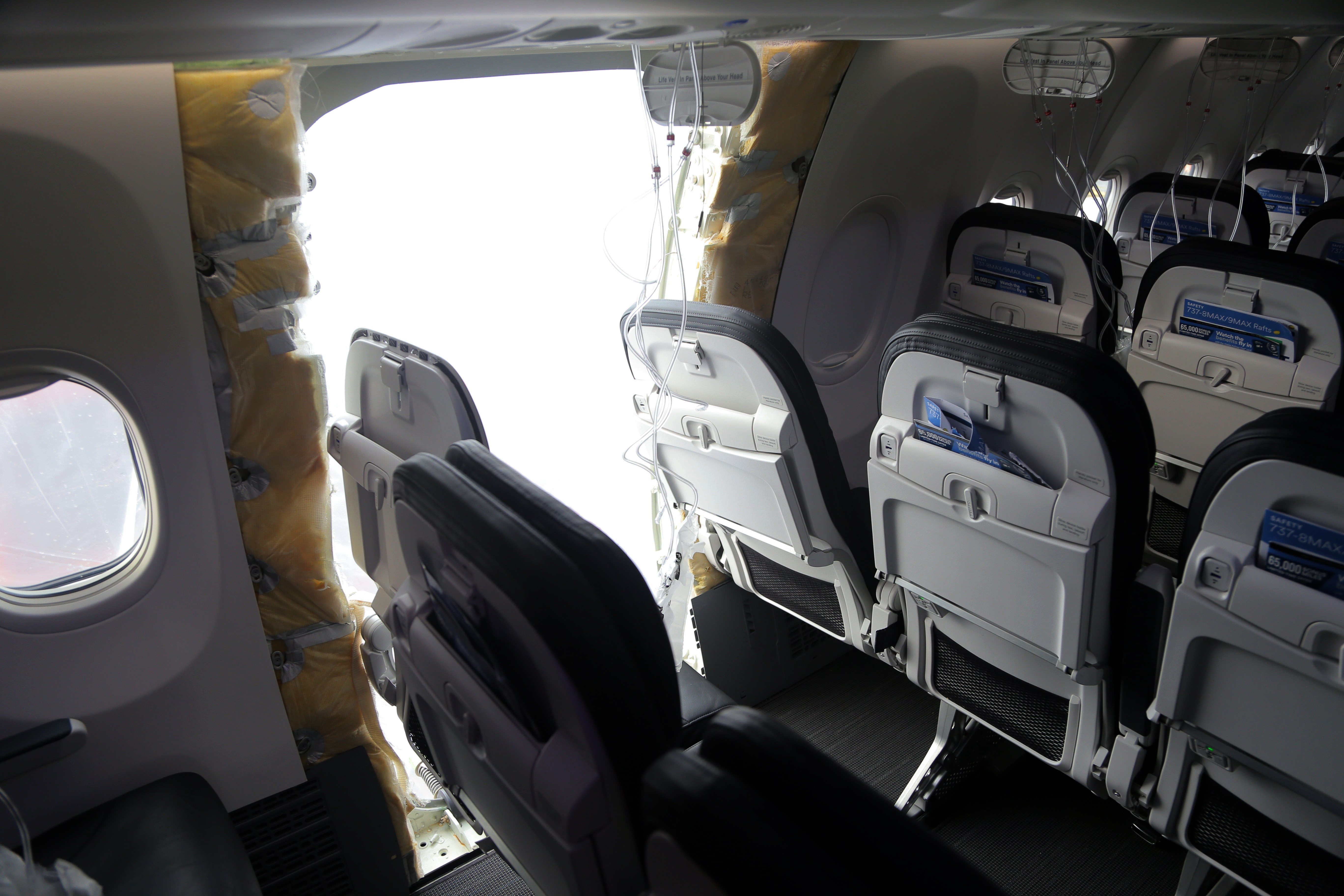
In this National Transportation Safety Board (NTSB) handout, an opening is seen in the fuselage of Alaska Airlines Flight 1282 Boeing 737-9 MAX on January 7, 2024 in Portland, Oregon. A door-sized section near the rear of the Boeing 737-9 MAX plane blew off 10 minutes after Alaska Airlines Flight 1282 took off from Portland, Oregon on January 5 on its way to Ontario, California. (Photo by NTSB via Getty Images)
The 737 Max is a series of narrow-body commercial aircraft developed as an upgrade to the highly successful Boeing 737 Next Generation (NG) series. First delivered in 2017, it was designed to be even more fuel efficient and with more power supplied by bigger engines.
It has attracted more demand than Boeing can supply, but has faced significant challenges. Most notable were crashes in Indonesia (2018) and Ethiopia (2019), which were partly caused by technical problems and killed 346 people.
So why have there been all these problems and what can be done?
Design and manufacturing
An investigation following the Indonesia crash revealed issues with an automated flight control system called the Maneuvering Characteristics Augmentation System (MCAS). This was designed to prevent the 737 Max from stalling, which had been made more likely by its larger engines. Yet the system’s complexity and reliance on a single sensor made it vulnerable to failure.
The MCAS was also involved in the Ethiopian crash, albeit the US safety agency argued pilot errors were the main cause. Boeing subsequently issued a software fix for the MCAS problem. So far as we are aware, it has now been resolved.
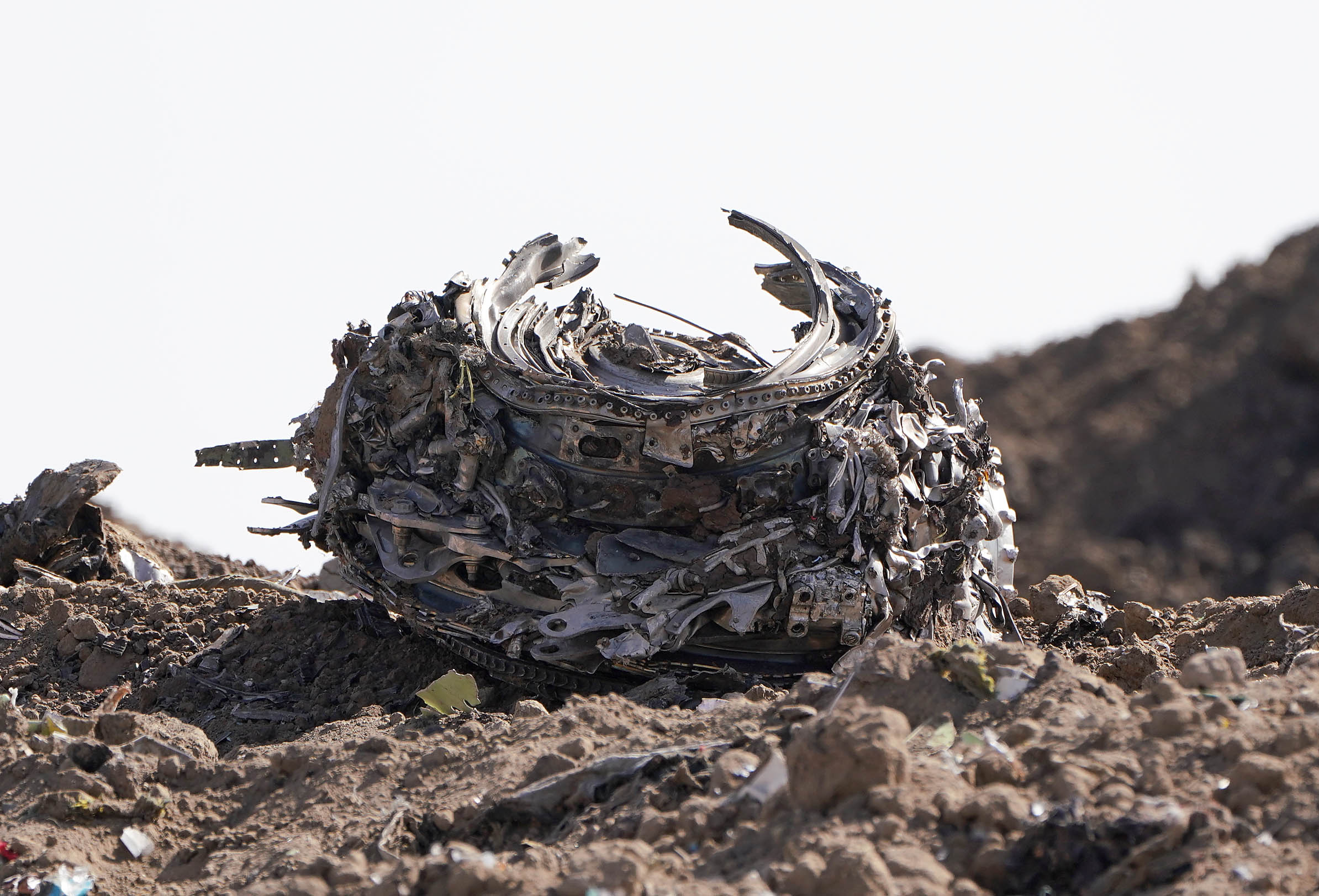
Investigators and recovery workers inspect a second engine after it is recovered from a crater at the scene of the Ethiopian Airlines Flight 302 crash on March 13, 2019 in Ejere, Ethiopia. All 157 passengers and crew perished after the Ethiopian Airlines Boeing 737 Max 8 Flight came down six minutes after taking off from Bole Airport. (Photo by Jemal Countess/Getty Images)
Besides the most recent issues with Alaska and United, quality and safety problems have included unsatisfactory wing components in 2019. In 2023, suppliers were poorly attaching aircraft fittings and drilling unnecessary holes.
While these defects could be blamed on manufacturing, unwieldy designs make it difficult to manufacture products at scale while meeting quality requirements. So, you have to question whether poor design and unrealistically high volume expectations are ultimately what has happened to the 737 Max.
The fact that the door plug problems and loose bolts are cropping up at a time when Boeing is trying to ramp up 737 Max production to about double the pre-pandemic level – and the pressure to achieve the pre-pandemic stock price – makes the design all the more suspect.
Moreover, leaked internal documents from 2015-18 have revealed that employees who worked on the Max planes believed the design was unsound. Hundreds of internal messages showed them referring to the “piss-poor design” and one “designed by clowns” who were “supervised by monkeys”.
A US Congressional report in 2020 into the 737 Max crashes said: “Boeing failed in its design and development of the 737 Max, and the FAA failed in its oversight of Boeing and its certification of the aircraft.” It also pointed to too close a relationship with the FAA.
Boeing’s approach to manufacturing costs may also be a factor. Former employees previously suggested it had imported a culture that focused on cost-cutting when it bought rival US aerospace manufacturer McDonnell Douglas back in 1997. Boeing has denied that it has compromised product safety or quality for any reason whatsoever.
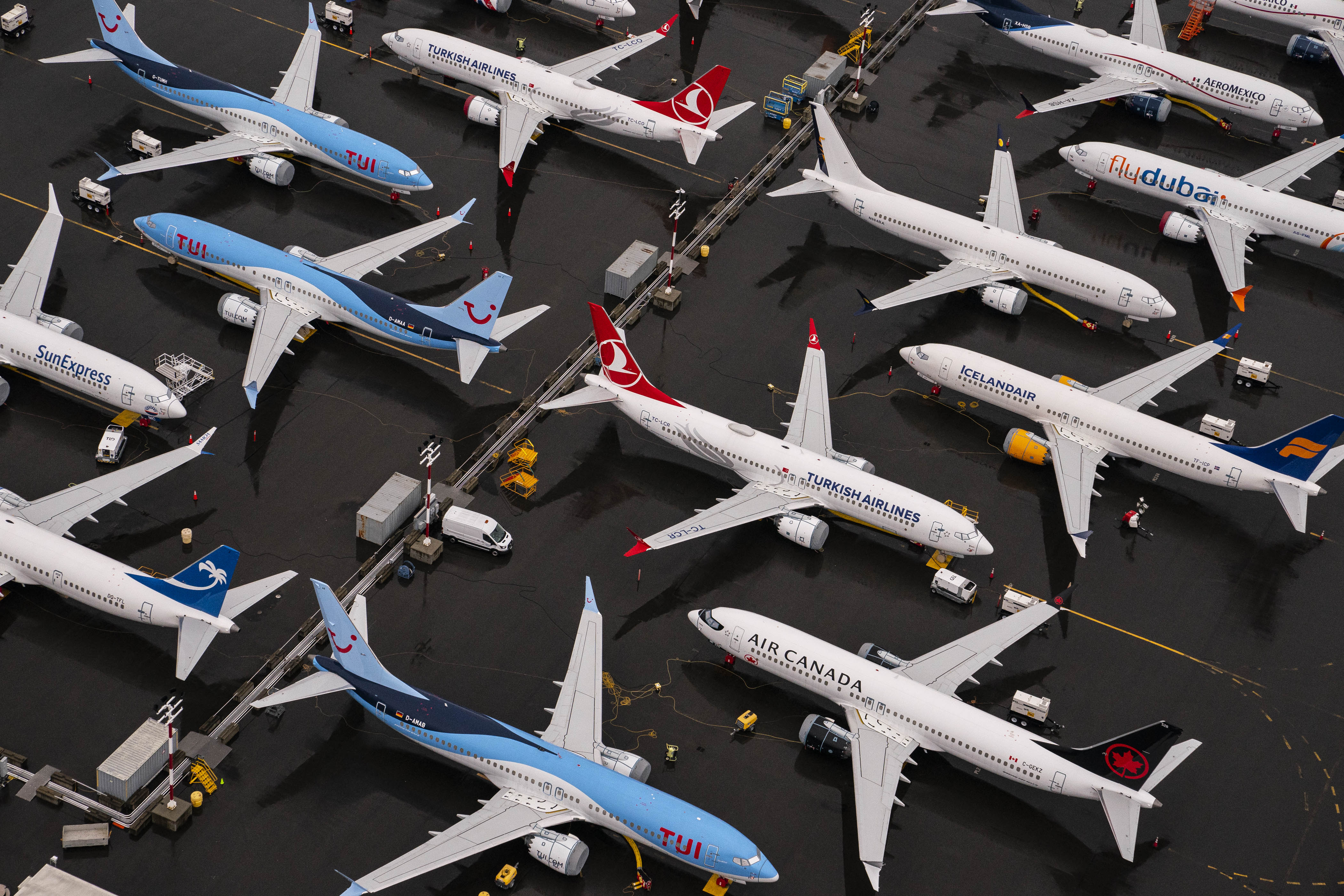
Boeing 737 Max airplanes sit parked at Boeing Field on November 18, 2020 in Seattle, Washington. The U.S. Federal Aviation Administration (FAA) cleared the Max for flight after 20 months of grounding. The 737 Max was grounded worldwide since March 2019 after two deadly crashes in Indonesia and Ethiopia. (Photo by David Ryder/Getty Images)
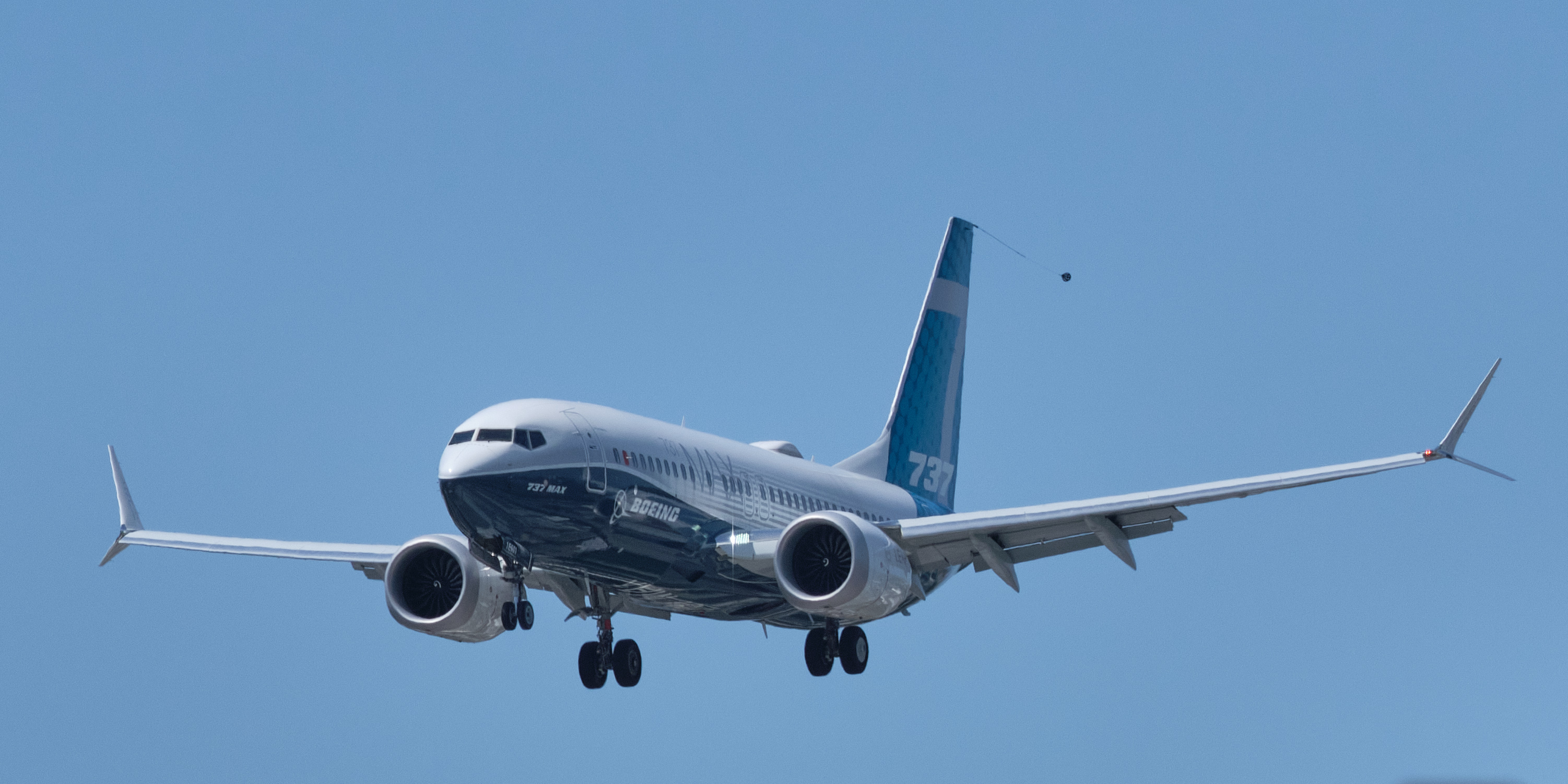
A Boeing 737 MAX aircraft lands following an FAA recertification flight at Boeing Field on June 29, 2020 in Seattle, Washington. (Photo by Stephen Brashear/Getty Images)
Assembly line workers on the 737 Max have reportedly faced intense pressure to meet production deadlines, while a former senior manager claimed in 2019 he had sent urgent emails and letters to the company’s leadership to shut down production. Boeing has denied that assembly-line pressure had any bearing on the crashes and pointed out that company’s commitment to safety was reflected in the fact that the whistleblower was able to brief its general counsel over his concerns.
Despite these alleged assembly-line issues, Boeing has not faced anything like the same problems with the other 737 variants or indeed with other planes like the 787 Dreamliner. Again, it indicates that the problem may have more to do with the design of the 737 Max.
Read in Daily Maverick: Last Boeing 747 rolls out of the factory: How the ‘queen of the skies’ reigned over air travel
What next
So what happens now? Going by the previous debacles, the playbook is clear. The FAA will lift the grounding order in the coming weeks as politicians start complaining about orders being lost to Airbus. Boeing will swear all the planes are safe and that the production processes of the parts vendor in question, Kansas-based Spirit AeroSystems, have been reviewed (Spirit has said it is committed to ensuring every Boeing plane meets the highest safety and quality standards).
Then, the White House will push developing countries to buy the Boeing 737 Max, as President Biden did in his visit with business leaders to Vietnam last September. All will be well – until it isn’t.
Instead, Boeing should suppress its political muscle and take a different approach. The 737 Max brand is so tarnished that it may be better to let go. More importantly, if the design is also ultimately unworkable at scale, it would be better to scrap it too rather than trying to push production even harder.
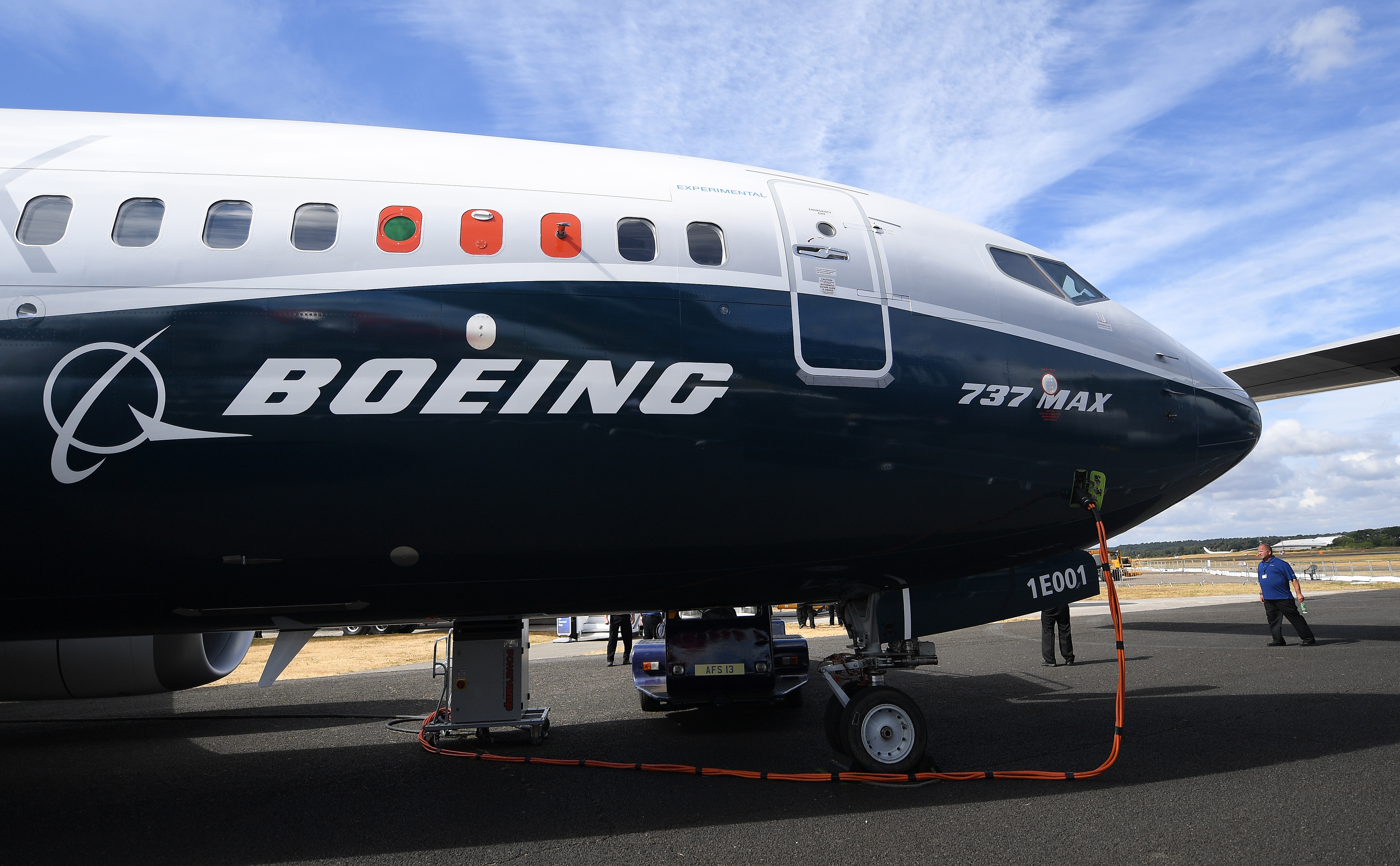
A Boeing 737 Max on display at the Farnborough International Airshow (FIA2018), in Farnborough, Britain, 17 July 2018 (reissued 23 October 2019). EPA-EFE/ANDY RAIN
The good news for the company is that the 737 has been highly successful commercially going back to 1968, with a solid history of safety, not including the 737 Max. The 737 variants’ safety record until the end of 2019 was the same as the narrow-body offering from Airbus, including the A320, but it has now become much worse with the 737 Max.
Boeing should arguably design a new narrow-body plane again based on the 737 Next Generation with higher efficiency and larger engines. The supply chain won’t need to be changed dramatically. It worked for previous 737s, so there is no reason it can’t work again; if cost-cutting has resulted in suppliers cutting too many corners, it needs to be revisited.
Boeing President and CEO Dave Calhoun said at an all-employee safety meeting on January 9: “We’re going to have to demonstrate trust by our actions, by our willingness to work directly and transparently with them (customers).”
This is true, but the company’s first priority has to be to make sure it has the trust of its workers by listening to their safety concerns and taking them onboard. Only by addressing its culture can Boeing end this crisis. There has been such a catalogue of sequential errors that anything short of a complete overhaul is only likely to compound the problem and put more lives at risk. DM




















 Become an Insider
Become an Insider
“So what happens now? Going by the previous debacles, the playbook is clear. The FAA will lift the grounding order in the coming weeks as politicians start complaining about orders being lost to Airbus. Boeing will swear all the planes are safe and that the production processes of the parts vendor in question, Kansas-based Spirit AeroSystems, have been reviewed (Spirit has said it is committed to ensuring every Boeing plane meets the highest safety and quality standards).
“Then, the White House will push developing countries to buy the Boeing 737 Max, as President Biden did in his visit with business leaders to Vietnam last September. All will be well – until it isn’t.>
what a world we live in…
“Only by addressing its culture can Boeing end this crisis.”
Absolutely. So “scrapping” the aircraft is not going solve the crisis. Get a grip on reality.
The 737 Max ‘s design is fundamentally flawed. This is acknowledged by experts. It needs to be scrapped ASAP, for the safety of commuters, and for Boeing’s already tatty reputation.
I would like to know what makes you feel qualified to determine that the 737 Max should be scrapped?
The 737 is by no means the only passenger aircraft to use computer controls and neither is it the only aircraft to use fuselage plugs.
So imagine scrapping the 737 Max. Tomorrow and Airbus suffers a failure of a plug. Our of it’s software control systems. But we will never know the root cause because we scrapped the evidence. That’s something 🤔🙄
It needs to be a requirement that airlines declare prior to accepting a booking by passengers what specific aircraft will be used on each and every flight. That way we can vote with our feet, rather than having to pray for a parachute.
I agree. That is also the Free Market principle!
Did I mishear? Did you advise Boeing to develop yet another derivative of the 737? With larger engines? What benefit would that offer? You would end up with an identical plane to the current Max. The 737’s design has reached a point where it can no longer be enhanced. The reason they are in this mess to begin with is because they opted to fit a square peg in a round hole by trying to further enhance a plane that over it’s 50 year history had already been enhanced on at least 4 other occassions. This, not to mention adding all of the different sizes they come in for each generation. The bigger engines are one of the main problems. Ultimately Boeing had been resting on their laurels in the early 2000’s and they were caught off gaurd by the inteoduction of the A320 NEO. At that time, the NG version was superior to the A320 CEO version so Boeing was making a killing. To be fair, Boeing offered to design an all new aircraft but airlines such as Southwest demanded another derivative of the 737 so as to keep training costs down. If anything, Southwest should be blamed as much as Boeing for the Max.
100% correct.
What complete drivel. It’s abundantly clear that the author has no appreciation of the fact that an entirely new aircraft takes most of a decade to DESIGN, let alone certify, ready for production and then actually produce. The author also does not appear to have an appreciation for the fact that, statistically speaking, the Airbus A320-series has had more fatal crashes (14) than the 737 MAX (2). The key difference is that the two 737 MAX crashes have been far more well-publicised than the A320 crashes.
It is not so simple at all! Wikipedia is not always right, but gives for the A320 family 1505 fatalities in 38 hull loss accidents, of which 17 caused fatalities.
And for the Boeing B737 family many more — 5717 fatalities in 217 hull loss accidents. So the A320 family seems to have a much better record than the B737. But B737s have been flying since 1968 — probably longer than A320s
I remember after one of the 737 crashes a SAA pilot trainer said it was due to pilot error.It was on radio.
Seeing as SAA doesn’t have any Boeings (and hasn’t had any for yonks), that hardly makes the SAA pilot trainer qualified to comment on the Max crashes.
A good article but although the dreamliner has not had any fatal crashes, there were many complaints from employees about quality control with many saying they would not fly on them and would not allow their families to fly on them either. There was an excellent documentary I THINK on Netflix about this.
When accountants (instead of engineers) were placed in charge of a techno giant like Boeing, that’s where the trouble started.
NB!
Can’t argue with a prof, and the other learned commentators, but if the design of the max was so problematic, how come the likes of Ryan Air and other airlines choose to fly the Max? Surely they are not that stupid, to fly a plane with an inferior design.
Imho quality control, either at Boeing or the airlines’ maintenance facilities seems to be problematic.&
Boeing seems to have a cultural challenge. They changed from an engineering-led approach to a profit-focused one. Perhaps Boeing should fire anyone who came from McDonnell-Douglas or anyone who sympathises with them and go back to the days when it was “If it’s a Boeing, we are Going. ” It is sad when you look out the airport windows to see what plane you have to fly in and be concerned that it’s wrong. I have always been a fan of Boeing – seeing them in this state isn’t very pleasant.